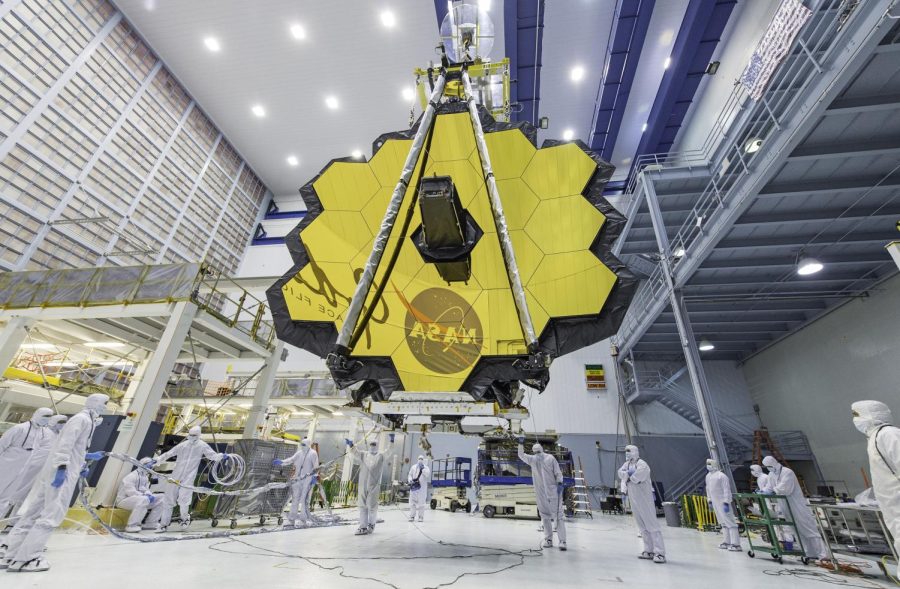James Webb Telescope Launched Into Space
NASA hopes to discover answers about the universe through the telescope
via Goddard Space Flight Center
The James Webb telescope was launched on Dec. 25, 2021, in French Guiana and took nearly 30 days to travel 1.5 million kilometers from earth.
February 12, 2022
Have you ever wondered about the origins of the universe? If the universe had a start? That is finally becoming possible after 25-30 years, thanks to the James Webb telescope that was recently launched.
The telescope was launched on Dec. 25, 2021, in French Guiana and took nearly 30 days to travel 1.5 million kilometers from earth. The James Webb telescope is NASA’s most expensive telescope and will scan the cosmos for the origins of the universe by finding the first stars, galaxy formations, and planetary systems including the origins of life.
How is finding the origins of the universe possible? Well, light has a speed, something we all know, so if there is a star 10 light years away from Earth it will take that light 10 years to reach Earth.
The obvious solution would be to catch the light that is millions of years away. Here comes the next obstacle. The universe has been expanding –trust me it’ll give you a migraine for days– that light has been stretched to the infrared, light that we can’t see. The next step is to send out a telescope with mirrors on it into space. The mirrors would have to be so big and cold it would liquefy air. The mirrors have to be cold enough to detect the subtleties in the photons. With any heat in infrared light, it glows not allowing it to work. When it launched, the mirrors would only move a centimeter a day, because NASA didn’t want to risk the motors heating up the mirrors.
NASA is expecting photos from the telescope to come back by June or July 2022, but the overall mission duration is being aimed at 5 to 10 years. NASA doesn’t know what this telescope can tell us, but one thing we know for sure is that it’s going to open a door for questions we don’t even know we have.
You can keep track of James Webb’s journey and track its progress here.













